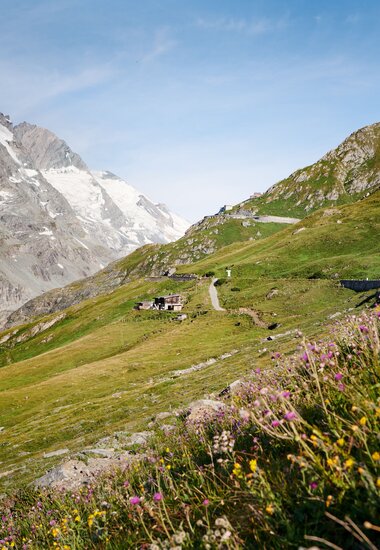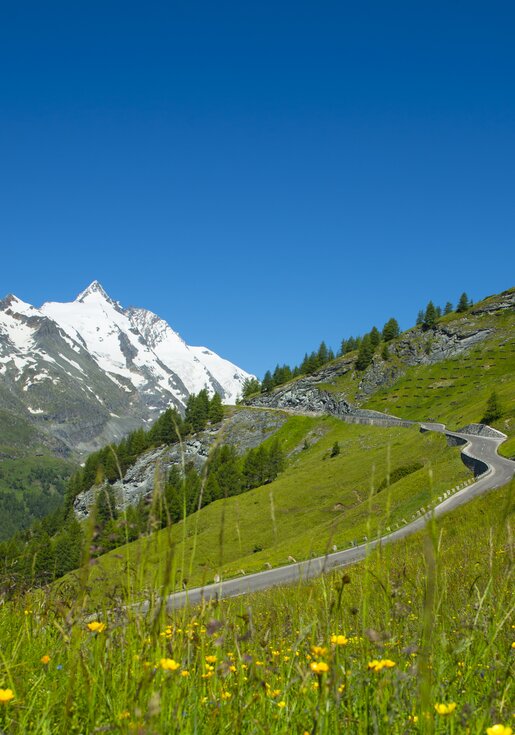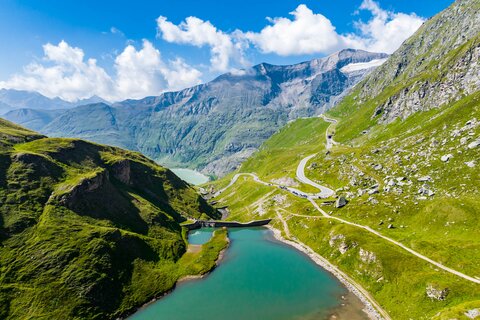A monument with sustainability From the outset, on the Grossglockner High Alpine Road there has been a delicate balance between nature, technology and tourism. Yet can a road really be in harmony with nature? And can it possibly even play a role in preserving the natural surroundings? These are the questions which GROHAG faces day after day. So, it is our aim to ensure the road provides the maximum sustainability in every conceivable way.
Obligated to protecting the natural surroundings
The Grossglockner High Alpine Road is one of the most epic landmarks of Austria, taking you into a unique high Alpine experience realm, into the heart of the most significant national park in Central Europe – the Hohe Tauern National Park. It is not just due to their legal duty that GROHAG, the operator of Grossglockner High Alpine Road, is obliged to take care of the organisation of the landscape around the road, helping protect the natural surroundings and this landscape. Moral duty also obliges them to protect and preserve these unique natural surroundings. After all, the Grossglockner High Alpine Road is a unique opportunity for EVERYONE to experience this incomparable high Alpine natural landscape; to see with their own eyes what protection actually means.
Step by step to greater sustainability
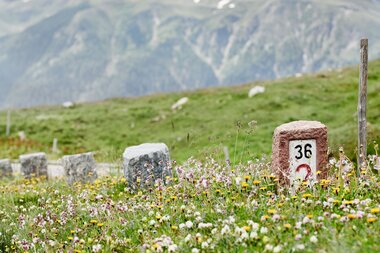
Our daily actions in all areas are geared towards ensuring maximum sustainability and attentive use of natural resources. To do this, GROHAG implements a range of measures to safeguard and protect the environment:
- Deployment of an innovative waste separation system
- A speed of 70 (km/hr) along the entire route
- Operating the Glocknerbus to supplement individual transport
- Healthy mountain pastures along the road
- Glockner-Öko-Fonds funding to support research projects in the area around the road
- Printing of all advertising media and print materials on PEFC-certified paper from sustainably managed forests in Austria
- Switch to sustainable materials and regional products for items in the shop
- Promoting E-mobility
We are of course planning even more ideas to provide greater sustainability and environmental protection. After all, without unspoilt natural surroundings the Grossglockner High Alpine Road wouldn’t be worth visiting …
E-mobility & Glockner ePower
on Austria’s loveliest roadOne challenge that GROHAG has increasingly faced in the last few years, is the mobility and energy revolution and the switch to electromobility. For that reason, a few years ago GROHAG began investing in the expansion of e-mobility. As well as discounted tariffs for E-cars and E-motorbikes, we are taking our guests with us on a Grossglockner Pleasure E-Tour – a sustainable road trip through the Hohe Tauern National Park. Glockner ePower provides consistent charging security along the entire road – our own high-powered and sustainable network, soon to comprise 200 charging stations, where you can charge your E-vehicle with green Glockner ePower, which comes from up to 100 % renewable energy sources. In the expansion of its own fleet, GROHAG is placing a great deal of emphasis on e-mobile vehicles too.
Speed: 70. Cruising, not racing!
On the Grossglockner High Alpine Road, as on all other GROHAG experience roads, the speed limit is 70 (km/hr). There are several reasons for this. On the one hand, a reduction in speed increases road safety on high Alpine, twisting roads. Racing and careless driving have no place on the Grossglockner High Alpine Road. With this in mind, adherence to the speed limits on the Grossglockner High Alpine Road is strictly monitored. On the other hand, the 70 (km/hr) speed limit also protects the unique natural landscape in the Hohe Tauern National Park. Those who drive more slowly emit fewer pollutants. And, last but not least, those who drive more slowly simply have more time to look, marvel and enjoy! Good reasons enough to enjoy this high Alpine Road wholly in keeping with the maxim: ‘cruising not racing’.
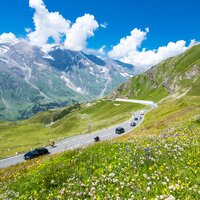
'What we do today, decides how the world will look tomorrow.'
(Marie von Ebner-Eschenbach)
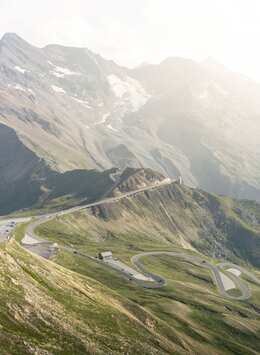

Ecological mountain pasture – for unspoilt, species-abundant meadows
The steep pastures along the Grossglockner High Alpine Road are among the most species-abundant flowering meadows in the Alps! These lovely looking areas are sensitive eco systems that react to the slightest change. For that reason, GROHAG also decided to mow the pasture areas along the Grossglockner High Alpine Road as late as possible in the summer, with their maxim being ‘ecological mountain pasture ’. Why? Because this mindful form of farming ensures that the lovely flowers in the meadows provide a source of food for bees, insects and the like for as long as possible.
Every pasture is a small eco system
Gentle cutting is often done by hand using a scythe has the advantage that emerging trees and shrubs, as well as quickly growing plants, are kept under control. At the same time, grasses and herbs have the opportunity to propagate by sowing their own seeds. Studies in the Hohe Tauern National Park have shown that if we were to forego cutting the mountain pastures, in the first few years the number of plant and animal species would indeed increase. However, then the shrubs and trees would keep growing and the variety of plants and abundance of animal species would be irretrievably lost. With that in mind, healthy mowing for healthy meadows!
Do you have ideas as to how the Grossglockner High Alpine Road can become even more sustainable? Ideas about additional measures we could put in place to protect our natural surroundings? Then write to us!
Glockner-Öko-Fonds Promoting research and science
The "Glockner-Öko-Fonds" (Glockner Eco Funds) supports nature and environmental protection projects as well as ecological research work for the protection and preservation of nature on the Grossglockner High Alpine Road.
Tips for your Grossglockner excursion
Pay attention to signposting
Pay attention to signposts in place. These designate various protection zones and indicate areas that are particularly protected.
Avoid making noise & keep to the paths:
Be mindful of the plants and animals in the National Park. Always keep to the marked paths and avoid making any unnecessary noise.
Take nothing away; leave nothing behind
Do not leave any objects in the National Park! Rubbish in particular can be lethal for many animals. Keep in mind the long-known mountaineering rule – what you take with you up the mountain, you bring back down again. Take nothing with you from the National Park. Animals and plants are conservation-protected and are not to be removed. Minerals too are to be left where they are.
Ensure you have adequate equipment
Please be aware of the fact that along the Grossglockner High Alpine Road you are in Alpine and high Alpine terrain. Wear decent footwear and always bring weatherproof clothing with you. Pay heed to the weather, to Alpine dangers, including avalanche and rock falls. Get information on site from people who have mountain experience about possible risks.
No camping
Even if it is extremely tempting to pitch a tent for the night with your camper van at a legendary viewing point along the Grossglockner High Alpine Road, camping and lighting fires is not permitted. There are campsites in the National Park districts that you can avail of. Or you could stay the night in one of the many cosy inns along the Grossglockner High Alpine Road.
Bringing your dog with you to the National Park
Dogs are welcome along the Grossglockner High Alpine Road and in the Hohe Tauern National Park! Please be aware that leads are compulsory throughout the area. Tips and information for a successful excursion with your four-legged friend can be found here.
Do not feed wild animals
In spite of best intentions, feeding wild animals can have fatal consequences. If they are fed too often by people, they become dependent on them for food. Animals can also get sick if they consume the wrong kinds of food.

